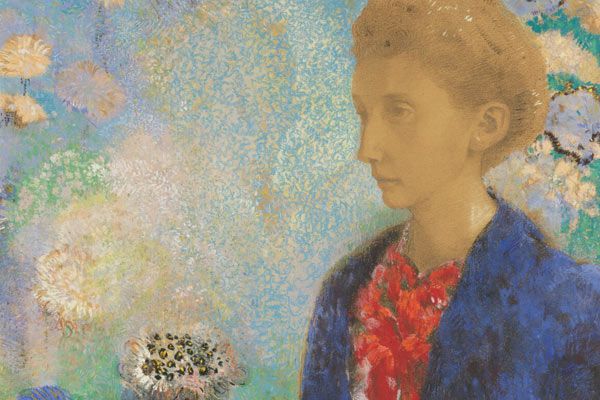
Pastels from the Fin de siècle
Odilon Redon - Baronne de Domecy - c1900
From 15 March to 14 August 2022, the Getty Museum presents "Powder and Light: Late 19th-Century Pastels", an exhibition showing the evolution of pastel during the last quarter of the 19th century.
Source: Getty Museum. Image: Odilon Redon, "Baronne de Domecy", circa 1900. Pastel and graphite. Getty Museum.
Drawn from the Getty Museum's own collection, the works included in the exhibition span from 1870 to the early 20th century, covering Symbolism, Impressionism and Post-Impressionism. Among the artists represented are Symbolists such as Odilon Redon, Impressionists such as Camille Pissarro, and Post-Impressionists such as Pierre Bonnard and Henri de Toulouse-Lautrec, as well as arguably the great master of pastel during the late 19th century, Edgar Degas.
“The medium of pastel, once considered stuffy and old-fashioned, experienced a surge in popularity during the last quarter of the 19th century,” explained Emily Beeny, curator of the exhibition. “Shrugging off academic convention, European artists experimented with pastels in new ways, revealing its limitless aesthetic possibilities and an exceptional range of colors and textures.”
In a press release, the Getty Museum delves into the technical reasons that made pastel an innovative medium:
The invention of synthetic dyes gave pastel sticks an iridescent palette. They could be applied dry or crumbled into a paste and laid on with a brush. Some artists manipulated the medium with their fingertips, lending a sensuous, touched-all-over quality to their artworks. These varied means of application resulted in a range of textures, from gauzy to opaque. Since pastels did not require painstaking layering or lengthy drying times, they also promised a swifter, more immediate mode of working than oil paint.
Read the full article

